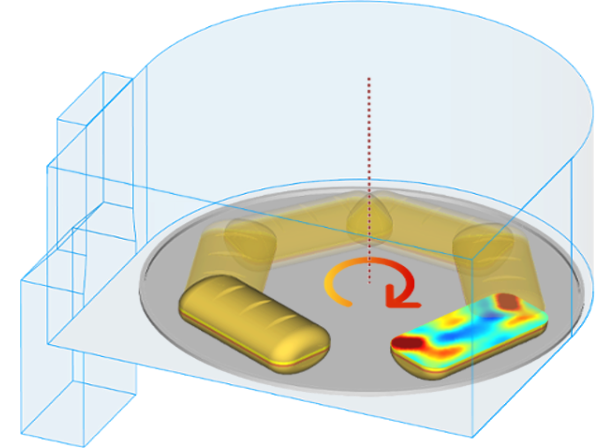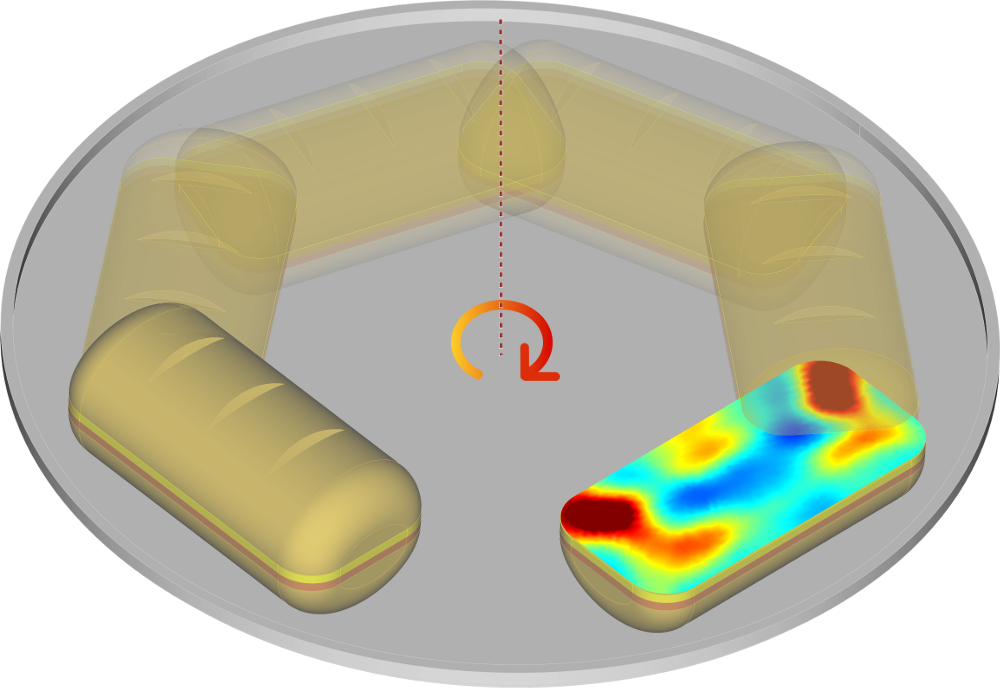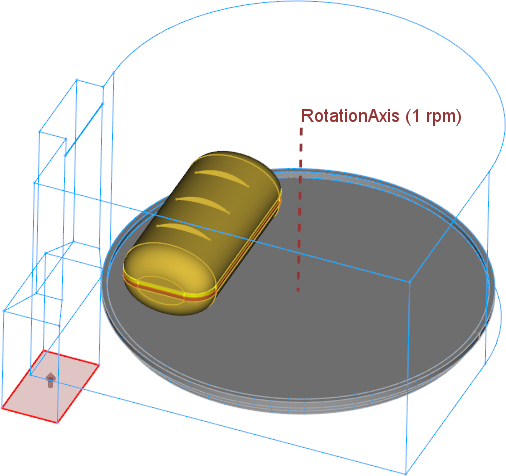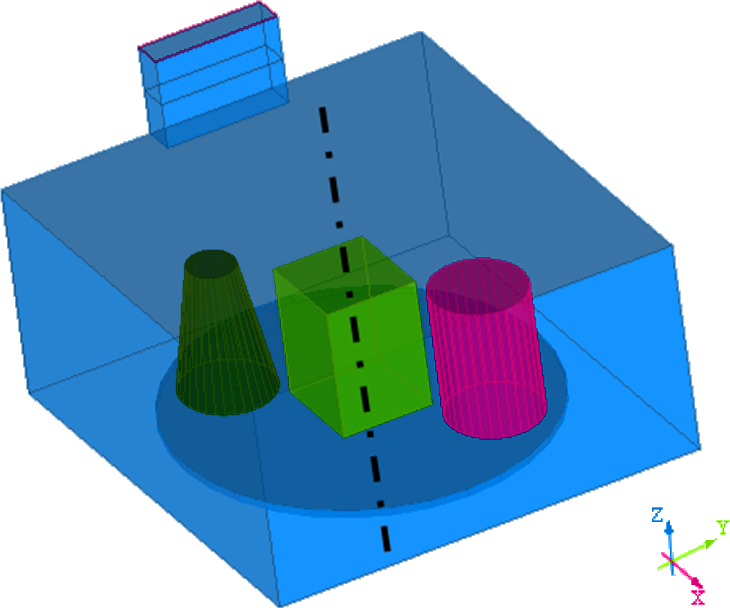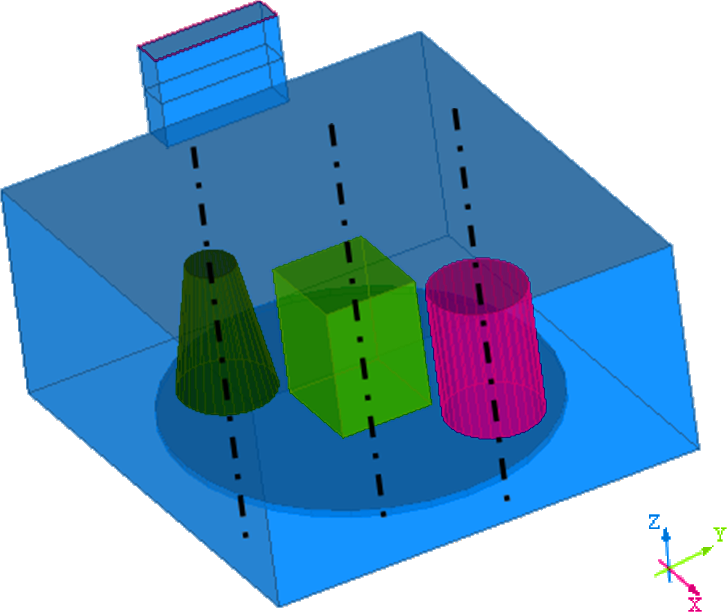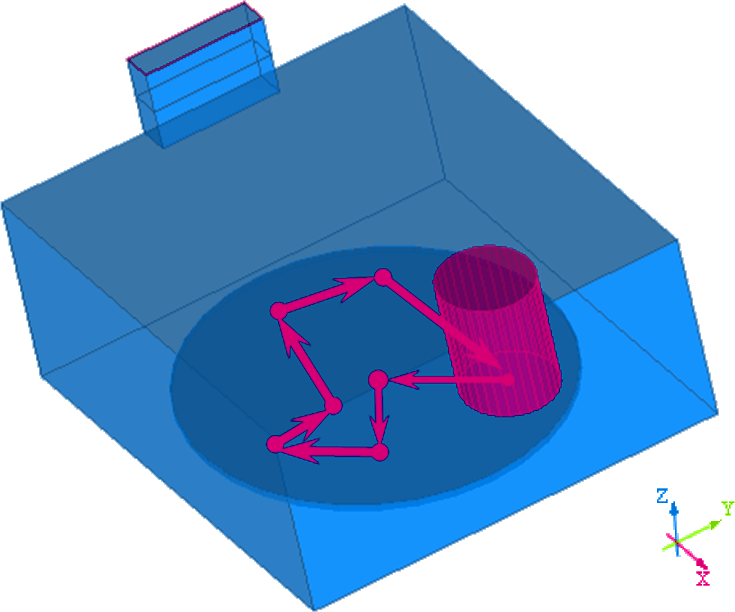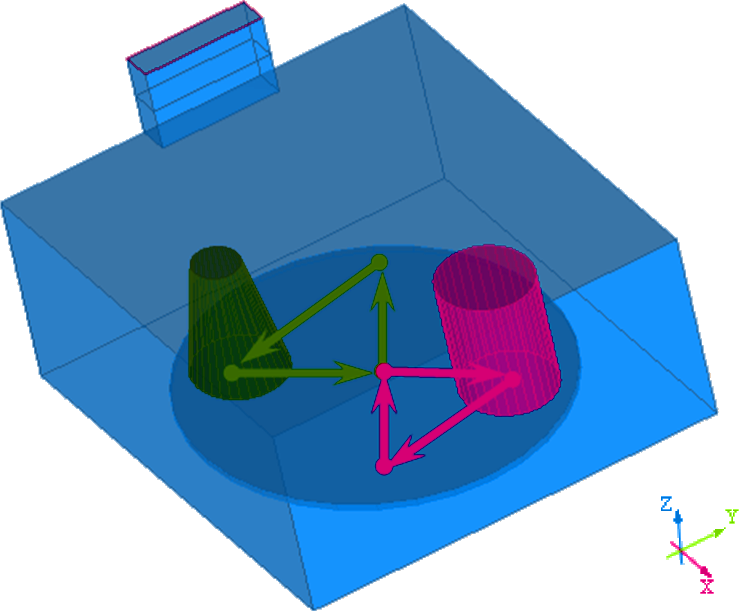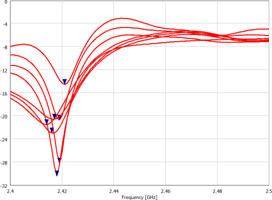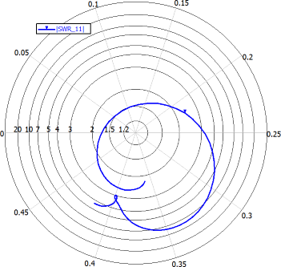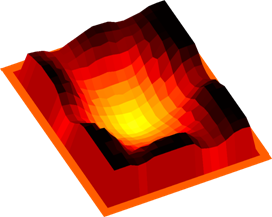•
modification of material parameters as a function of dissipated energy
•
modelling the rotation in domestic ovens
•
movement of the heated object(s) in industrial applicators along complicated trajectories
•
modelling of rotation of multiple objects rotating around different rotation axis and with different speeds
•
modelling of movement of multiple objects along different trajectories
•
modelling of the rotation of metal objects
•
automatic tuning of the source to the deepest resonance in the considered frequency band (this option mimics the physical behaviour of the real microwave power sources like magnetrons)
•
manual tuning of the source (user indicates the new frequency)
•
automatic source parameters changing (frequency, amplitude and delay) in the consecutive heating steps, according to user specification, performed for each source separately
•
analysis of the heat transfer problems taking into account divided cells (internal Heat Flow Module using non-linear model)
•
possibility of coupling Basic Heating Module with external applications modelling effects not supported in QW-BHM



